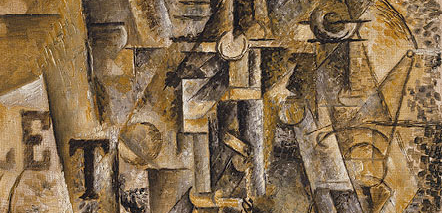
In the last article we saw if you building, creating, designing or developing things is your first job then explaining those things is job two. And three. And four. Look at it this way: If you can’t explain it, sooner or later someone is going to decide that this thing is just too much trouble to keep around and toss it. And it’s not just the stuff you build. Explaining is a key way that you can make the people around you more effective, your company more efficient and your work life more interesting.
Have a Plan
If you do want to improve your explaining chops then you need to start with the one thing that every explanation has: A plan. Since every explanation is a package of transportable facts that you are trying to copy into the head of your listener, every single explanation is built according to some plan. The plan may be well thought out or just cobbled together but there will be a plan. A carefully planned explanation is like a Leonardo da Vinci drawing or a Dutch masters' paintings, enjoyable and functional.

Even if you don’t consciously plan your explanation, it will still have a plan, what I think of as the default plan. Instead of laying out the important ideas and facts in a logical sequence, with the default plan you take more of a stream of consciousness approach.
If you are a software developer and you are called on to explain the system you are working on, you might start with the last feature you worked on. Or the first. Of the part of the system you like the best. Or the least. Or the part that was going to be so cool but was cancelled. Or the part that always seizes up in production. All of which may be interesting — and possibly entertaining — but is probably not going to jell into an effective explanation. Like a Picasso painting, all of the parts may or may not be there, but what is certain is that they will be jumbled together into a hard to decipher whole.
As I say, you need a plan.
Lead With the Big Picture
So if you want to avoid the Picasso style explanation you need to do a little bit of planning. This can be as simple as pausing to take a breath in the hallway before you jump into an explanation of how this thing works. During that breath you might decide to go for the top down layout for you explanation.

Imagine you are working with a developer who is new to your project and the two of you are going to tackle the next development task — perhaps you need to build a login screen. How do you orient your partner? If follow the top-down plan then you start with the big picture:
We are, of course, trying to get rich selling pet food on the Internet…
And then zoom in a bit:
So we are building this e-commerce site…
And then finally:
And so we need a login screen which can deal with either a password, finger or paw print authentication…
None of this is rocket science — it just requires a bit of planning and thought. You start with the big picture, which provides the context, the setting for for your explanation and then you work down to the details.
I was recently reminded of the value of a top down explanation when I happened to mention at a party that I was in building a 3D printer in my spare time. Instead the oh that’s cool excitement I was expecting, I got a number of blank stairs. It was then that I realized that perhaps not everyone knows what a 3D printer is. No problem, you just need to zoom out a little bit and start with the big picture:
So a 3D printer is a gadget for creating most anything that is reasonably small and made of plastic. They work by depositing thin layers of molten plastic on a glass plate. They are about the size of a an ordinary print text on paper printer and are driven by a computer in pretty much the way an ordinary printer is.
That’s the big picture, and now it’s time to zoom in:
So I have been building a 3D printer on my dinning room table…
And then everyone can be properly thrilled by my stories of motors and belts. Or at least they won’t be completely confused by them.
The Best Top Dow Explanation Ever
While my little tale of 3D printing is a decent top down explanation, my favorite example actually comes from the most famous speech in US political history, the Gettysburg Address. Lincoln delivered that speech at the height of the US Civil War and famously — at least if you are an American — it starts with these words:
Four score and seven years ago our fathers brought forth on this continent, a new nation conceived in Liberty, and dedicated to the proposition that all men are created equal.
Don’t let the archaic language distract you. Lincoln is starting with the big picture by going back to the founding of the United States (for him) 87 years previous.
He then zooms in a bit by focusing on the last few years:
Now we are engaged in a great civil war, testing whether that nation.. can long endure…
And then finally to this afternoon, right now:
We are met on a great battle-field of that war. We have come to dedicate a portion of that field, as a final resting place for those who here gave their lives that that nation might live.
That is the entire history of the US from the beginning to today in a single paragraph. That is a first class top down explanation.
Or You Can Reverse the Neutron Polarity
A second way that you can organize an explanation is to reverse the flow of the top-down explanation and go from the details to the bigger picture. So you start in the weeds:
Here we are, working login screen which can deal with either a password, finger or paw print authentication…
And then work outward:
Because our e-commerce site needs a log in screen…
And finally the big picture:
Because we are trying to get rich selling pet food on the Internet…
It doesn’t matter which direction you do it, what does matter is that you connect the messy details, a log in screen for example, to the more global picture. You need to do this because it’s the context that is the critical thing that every good explanation provides. Look at it this way: All I have to do is reach for my browser and I have a billion individual facts at my fingertips. The thing a good explanation provides is how the facts fit together. Not just how a 3D printer works or where the password field should go but what a 3D printer is for and why we are creating the login screen.
Wrapping Up
So there you have it. You need a plan for your explanations, because if you don’t have a plan you explanation is likely to come out looking like abstract art: Lovely perhaps, but less than informative. So in this article we looked at top down and bottom up explanations. Either start with the big picture and work down to the details or start with the details and work up. The idea is to anchor the details in a context that makes sense to your listener.
Happily, top down and bottom up are not the only items on the explanation plan menu and so in the next couple of articles we will look at process and simple to complex explanations.
— Russ




